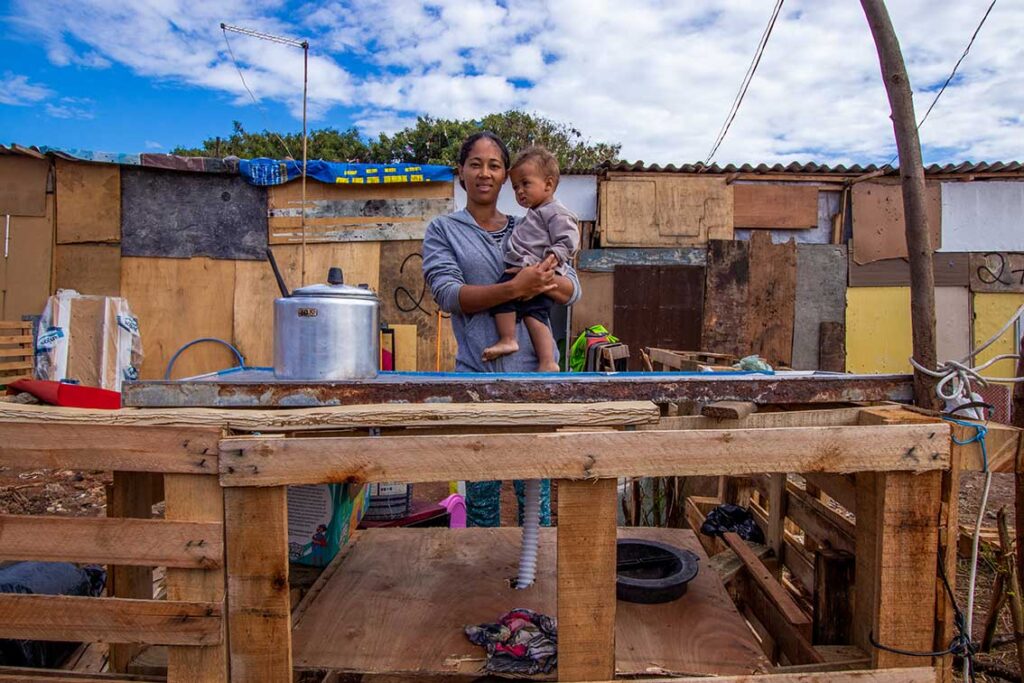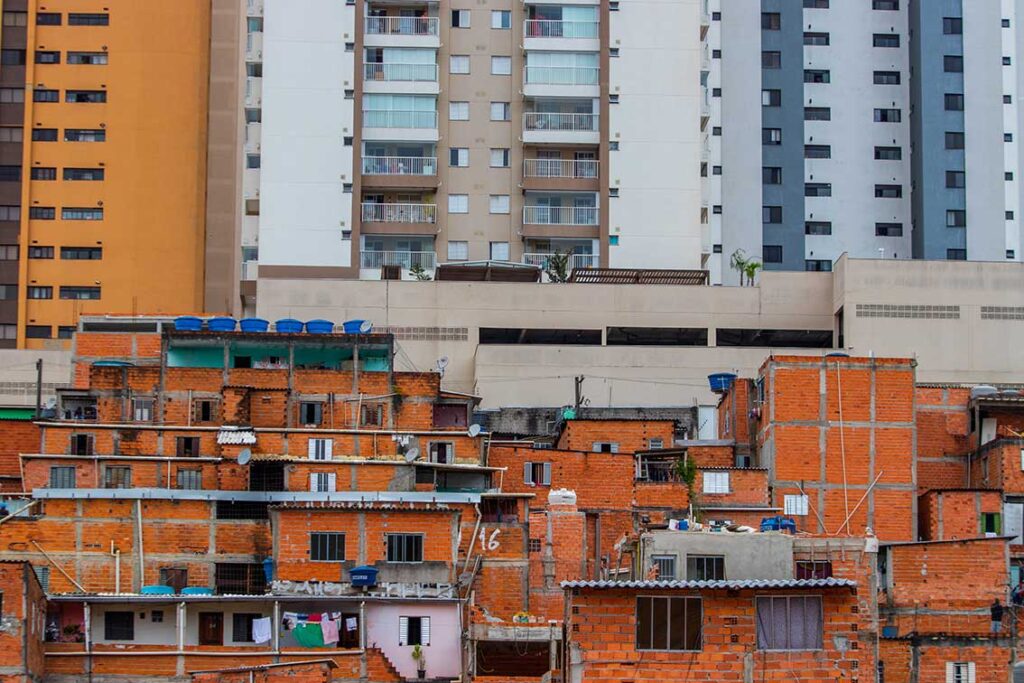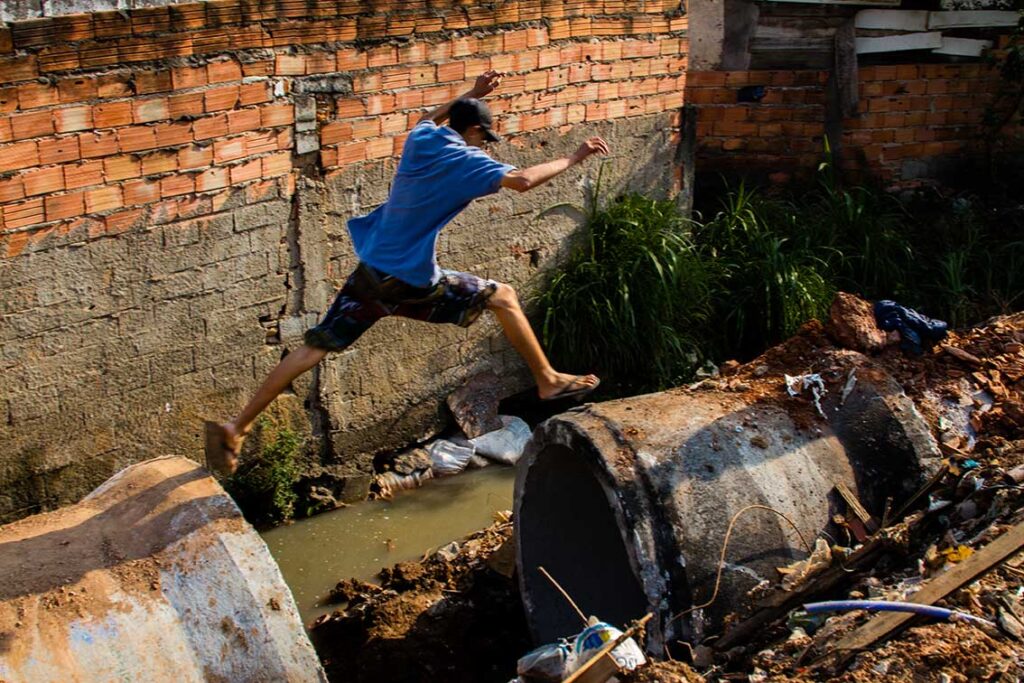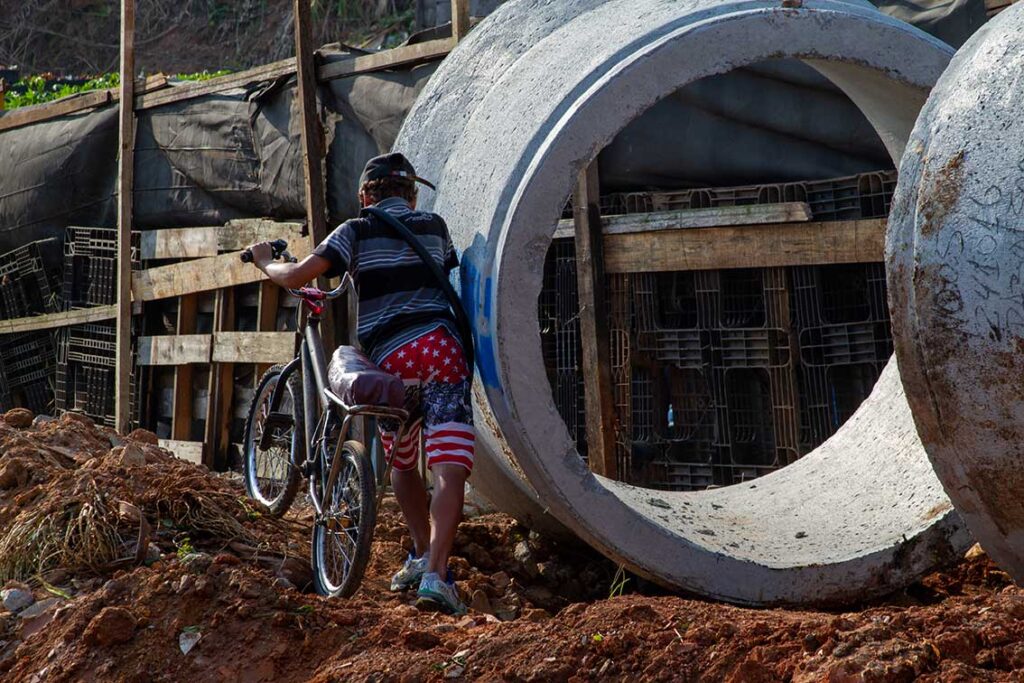A gambiologia da sevirologia
The Art and Science of Making Do
By Léu Britto
As the proverb goes: When life gives you lemons, make a lemonade.
That is precisely what I show in the photographic essay “A gambiologia da sevirologia”
(The art and science of making do): how the population from the outskirts developed strategies to survive and adapt to the adversities in a setting of deprivation.
A quick fix for us – and I include myself, as I was born in a favela, Monte Azul, which was never synonymous with doing things poorly. Quite the opposite: it is doing what you can to adapt and reach a goal.
Overcoming the barriers imposed by the absence of public power has given the impoverished populace the capacity to make do with what they have at hand, or at their feet, to achieve better structural conditions, without expecting anything from governmental agencies.
If there is no swimming pool, the people will create one. If there is no bike lane, we ride our bikes where we can. When the truck with construction materials cannot get to a shack at the center of the favela, the neighbor will load it into the trunk of his car and help carry the cinder blocks. There are countless examples from the daily life in the outskirts to which naturalist Charles Darwin’s sentence applies: “It is not the strongest species that survive, nor the smartest, but rather the most susceptible to change.” In this aspect, we are experts!
Make Do With What You Got!
In her book Child of the Dark: The Diary of Maria de Jesus – to date, a best seller in countless countries –black and semiliterate writer Maria Carolina de Jesus wrote:
“I am not lazy. I have wanted to write my diary for a long time. But I thought it had no value and reckoned it would be a waste of time… I reformed myself. I want to treat the people I know more carefully. I want to give the children
and the workers a kind smile”.
[free translation]
The first time I read this excerpt, I identified and wondered: am I making useless records about the favelas in São Paulo? The unease of this question dissipated after I reconsidered and realized it was not in vain.
As Carolina affirmed, I also reformed myself and stated my mission in photography: give even more life to the ghetto through my images; highlight there is a marginalized population that resists daily and fights for their survival.
Then, in 2013, I was introduced to the art and science of making do, when I did the photo coverage of the 8th-year anniversary of resistance of Comunidade Cultural Quilombaque in Perus, a neighborhood in the city of São Paulo. There, I was introduced to educator José Soró. For me, the terminology of making do with what we have at hand started with him. His motivational line to keep all firm in the popular struggles was: “Today we will do the art of making do in practice!”.
Another member of Quilombaque, articulator Cleiton Ferreira – aka Fofão –wrote in an article dated June 2020 – part of project Usina de Valores –about the art of making do in territories in conflicts.
“Grounded on the assumptions and fundamentals of the systemic vision, a multidimensional methodology was created to diagnose, plan and act upon reality, producing knowledge for people to learn in a processual and permanent manner. In other words, if you have, you do it; if you don’t have, you do it anyway, YOU MAKE DO!”.
É nois Q tá se arranjando memu – vivão e vivendo!
It’s we who are really getting by – very alive and living!
Try being born Poor, Black, and in a Favela. It’s not victimization, no, because I invite you to think that way, see these images, and try to put yourself in the shoes of the millions of Brazilians who live like that throughout the country.
Say what you may, because it is what it is!
The outskirts start atop streams, going hungry and tasting destitution. There is a lack of jobs, leading many to abandonment and violence. We are bodies sold by the bourgeoisie and by the media, who try to translate us as idle do-nothings who want to live an easy life in alleys and lanes, only enjoying the “un-relief” aids that come along when they do come along.
Don’t delude yourselves! We, who are here, struggling every day for our daily bread at home, this side of the bridges, we are resistance. Be sure it is the quick fix of making do in US FOR OURSELVES that enables the conditions to have entertainment, leisure, culture, art, education, and rights for bros and hoes.
Léu Britto (São Paulo/SP, 1987).
Cofounder of DiCampana Foto Coletivo (DiCampana Photographic Collective), with which he has worked since 2016.
Léu Britto was born in Favela Monte Azul in São Paulo’s Southside. Self-taught, he got started in the art of photography in 2007, recording the Movimento Estadual da População em Situação de Rua (Homeless Population State Movement) demonstration at Sé Square in downtown São Paulo.
As a photojournalist, he already worked for outlets such as Rede Brasil Atual between 2012 and 2013; and Mural Blog and News Agency from the Outskirts, work he started in 2010 and continues to date. As photo-documentarist in the cultural sector, he did commissions for União Popular de Mulheres (Popular Women’s Front) and Agência Solano Trindade between 2013 and 2016; for Projeto REDES and for Festival Percurso in its editions of years 2013 and 2019; and for the 11th Mostra Cultural da Cooperifa, in 2018. His works also gained visibility in 2017 with exhibitions “MONOGaleria” at Sesc Campo Limpo, and “Otros carnavales”, organized in partnership between Mídia NINJA and Rede Latino-Americana de Fotografia Coletiva (Latin American Photographic Collective Network).
Selected by the Photothings Festival in 2021, LéuBritto released his first photobook by Porto de Cultura last year, with the title “ A gambiologia da sevirologia”.







